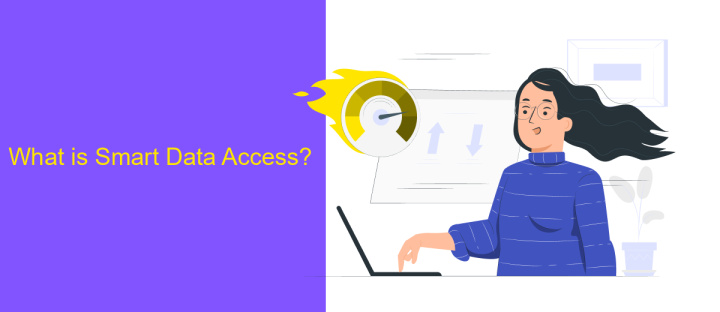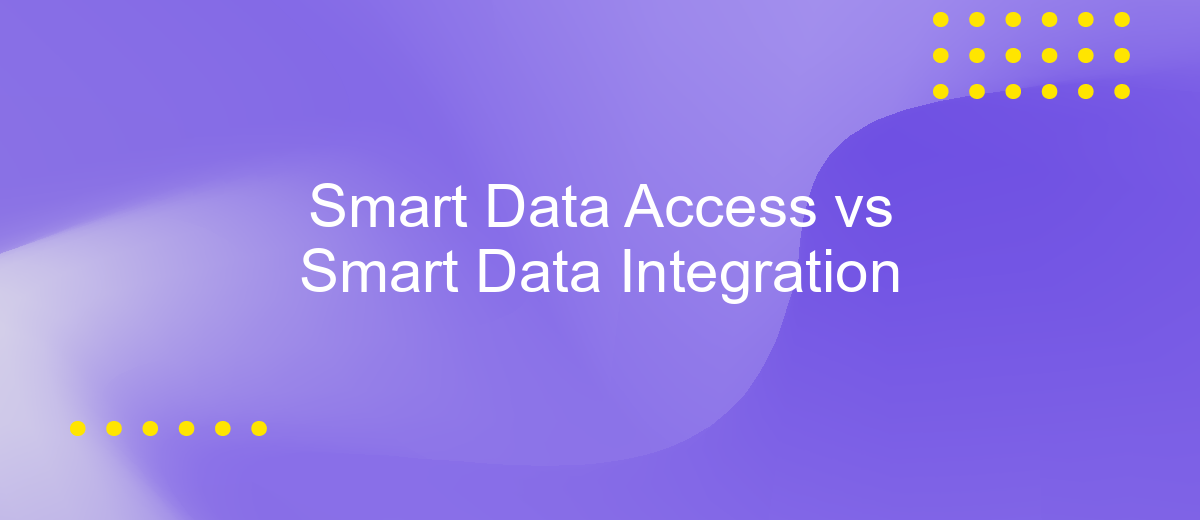Smart Data Access vs Smart Data Integration
In today's data-driven world, businesses face the challenge of efficiently managing and utilizing vast amounts of information. Two prominent approaches are Smart Data Access and Smart Data Integration. While Smart Data Access focuses on retrieving data from various sources in real-time, Smart Data Integration emphasizes combining data from different systems into a cohesive, unified view. Understanding their differences is crucial for optimizing data strategy.
Introduction
In the rapidly evolving landscape of data management, organizations are constantly seeking efficient ways to handle the vast amounts of data they generate. Two key approaches that have emerged in this domain are Smart Data Access (SDA) and Smart Data Integration (SDI). While both methodologies aim to optimize data utilization, they serve distinct purposes and offer different benefits.
- Smart Data Access (SDA): Focuses on providing direct and real-time access to data from various sources without the need for extensive data movement or replication.
- Smart Data Integration (SDI): Emphasizes the combination and transformation of data from multiple sources into a unified view, often involving data warehousing and ETL (Extract, Transform, Load) processes.
Understanding the differences between SDA and SDI is crucial for organizations to make informed decisions about their data strategies. By leveraging the strengths of each approach, businesses can enhance their data analytics capabilities, improve decision-making processes, and ultimately gain a competitive edge in their respective industries.
What is Smart Data Access?

Smart Data Access (SDA) refers to the capability of quickly and efficiently retrieving data from various sources without the need for extensive data movement or replication. This approach emphasizes real-time access to data, enabling users to query and analyze information directly from its source. By leveraging advanced data virtualization techniques, SDA ensures that data remains up-to-date and consistent, allowing organizations to make informed decisions based on the most current information available.
One of the key benefits of Smart Data Access is its ability to integrate seamlessly with existing systems and databases. Services like ApiX-Drive facilitate this integration by providing a user-friendly platform for connecting various applications and data sources. With ApiX-Drive, organizations can automate data workflows and ensure that data is accessible in real-time, enhancing operational efficiency and decision-making processes. By eliminating the need for complex data migrations, SDA helps businesses save time and resources while maintaining data integrity and accuracy.
What is Smart Data Integration?

Smart Data Integration (SDI) is a comprehensive approach that enables seamless data connectivity and harmonization across diverse systems. It leverages advanced technologies to ensure data from various sources is accurately combined, transformed, and delivered in real-time or near real-time. This integration is crucial for organizations aiming to enhance data accessibility, improve decision-making, and maintain data consistency.
1. **Data Connectivity**: SDI connects disparate data sources, including databases, cloud services, and on-premises systems, ensuring a unified view of data.
2. **Data Transformation**: It involves cleansing, enriching, and transforming data to meet specific business needs and improve data quality.
3. **Real-Time Processing**: SDI supports real-time or near real-time data processing, enabling timely insights and actions.
4. **Scalability**: The integration framework can scale to handle large volumes of data and complex data environments.
5. **Security**: Ensures data security and compliance with regulations through robust encryption and access controls.
By implementing Smart Data Integration, businesses can unlock the full potential of their data assets. It facilitates a cohesive data strategy, allowing for more informed decision-making and operational efficiency. This approach not only bridges the gap between siloed data but also paves the way for innovative data-driven solutions.
Benefits and Drawbacks

Smart Data Access (SDA) and Smart Data Integration (SDI) offer unique advantages and challenges in managing data. SDA allows users to access data from various sources in real-time without the need for replication, enhancing efficiency and reducing storage costs. On the other hand, SDI focuses on combining data from different sources into a unified view, which can be more beneficial for comprehensive data analysis and reporting.
However, both approaches come with their own set of drawbacks. SDA can suffer from latency issues due to the real-time nature of data access, and it may also pose security risks as data is accessed directly from the source. SDI, while providing a consolidated view, often requires complex ETL (Extract, Transform, Load) processes, which can be time-consuming and resource-intensive.
- SDA: Real-time access, reduced storage costs, potential latency issues.
- SDI: Unified data view, complex ETL processes, higher resource demands.
In conclusion, the choice between Smart Data Access and Smart Data Integration largely depends on the specific needs of the organization. SDA is ideal for scenarios requiring immediate data access, while SDI is better suited for in-depth data analysis and reporting. Understanding the benefits and drawbacks of each approach is crucial for making an informed decision.
- Automate the work of an online store or landing
- Empower through integration
- Don't spend money on programmers and integrators
- Save time by automating routine tasks
Conclusion
In the evolving landscape of data management, both Smart Data Access and Smart Data Integration offer unique advantages. Smart Data Access focuses on providing real-time data retrieval and on-demand access, making it ideal for dynamic environments where immediate information is crucial. On the other hand, Smart Data Integration emphasizes the seamless merging of disparate data sources, ensuring a cohesive and comprehensive data ecosystem. This approach is particularly beneficial for organizations seeking to unify their data for more robust analytics and decision-making processes.
Choosing between Smart Data Access and Smart Data Integration depends on the specific needs of an organization. For instance, businesses requiring real-time insights might lean towards Smart Data Access, while those aiming for a holistic view of their data landscape might prefer Smart Data Integration. Tools like ApiX-Drive can simplify the integration process, offering automated solutions to connect various data sources efficiently. Ultimately, the right choice will align with an organization's strategic goals and operational requirements, ensuring that data serves as a powerful asset in driving growth and innovation.
FAQ
What is Smart Data Access?
What is Smart Data Integration?
How does Smart Data Access differ from Smart Data Integration?
When should I use Smart Data Access over Smart Data Integration?
What tools can help automate Smart Data Integration processes?
Apix-Drive is a universal tool that will quickly streamline any workflow, freeing you from routine and possible financial losses. Try ApiX-Drive in action and see how useful it is for you personally. In the meantime, when you are setting up connections between systems, think about where you are investing your free time, because now you will have much more of it.


